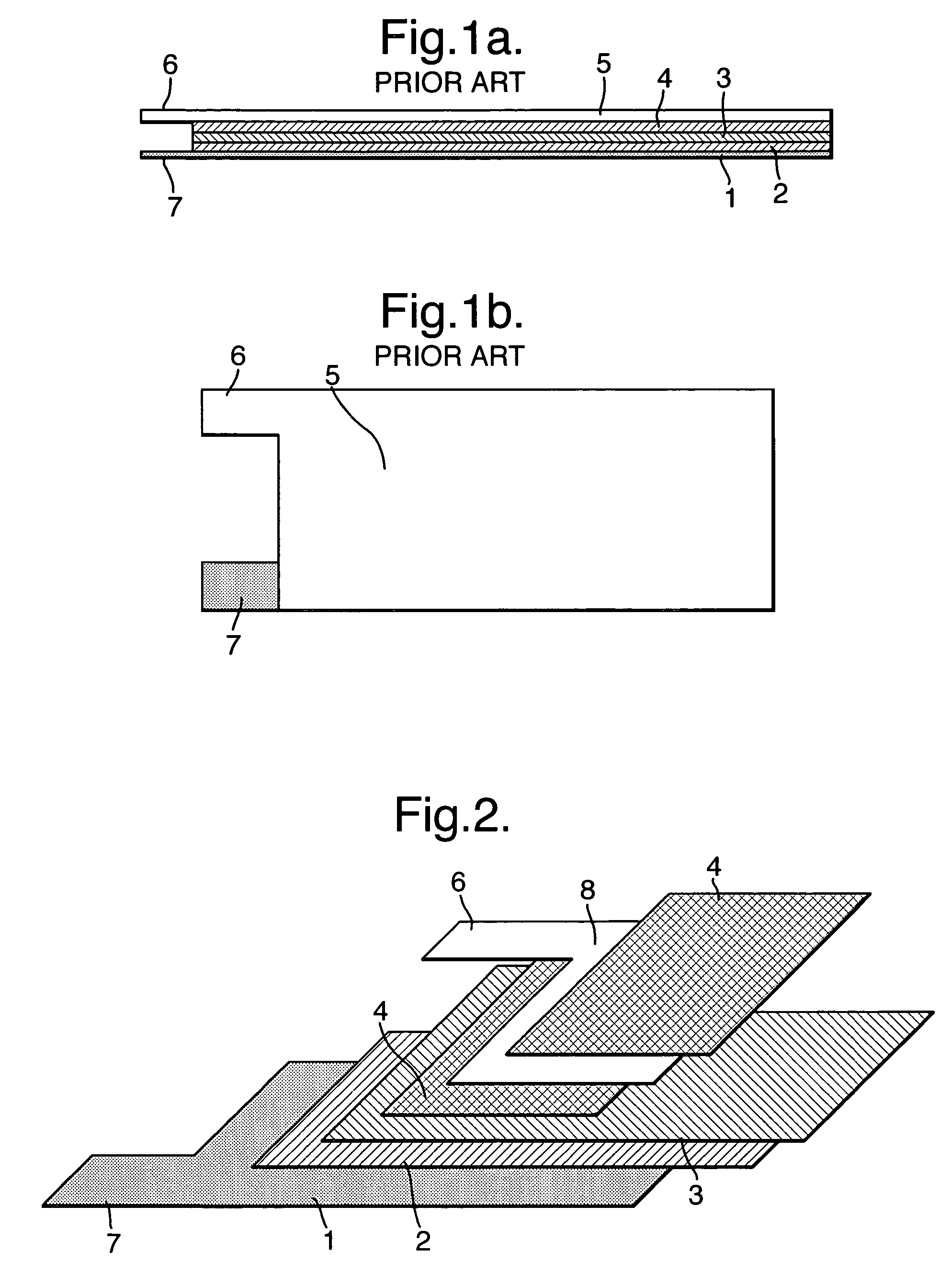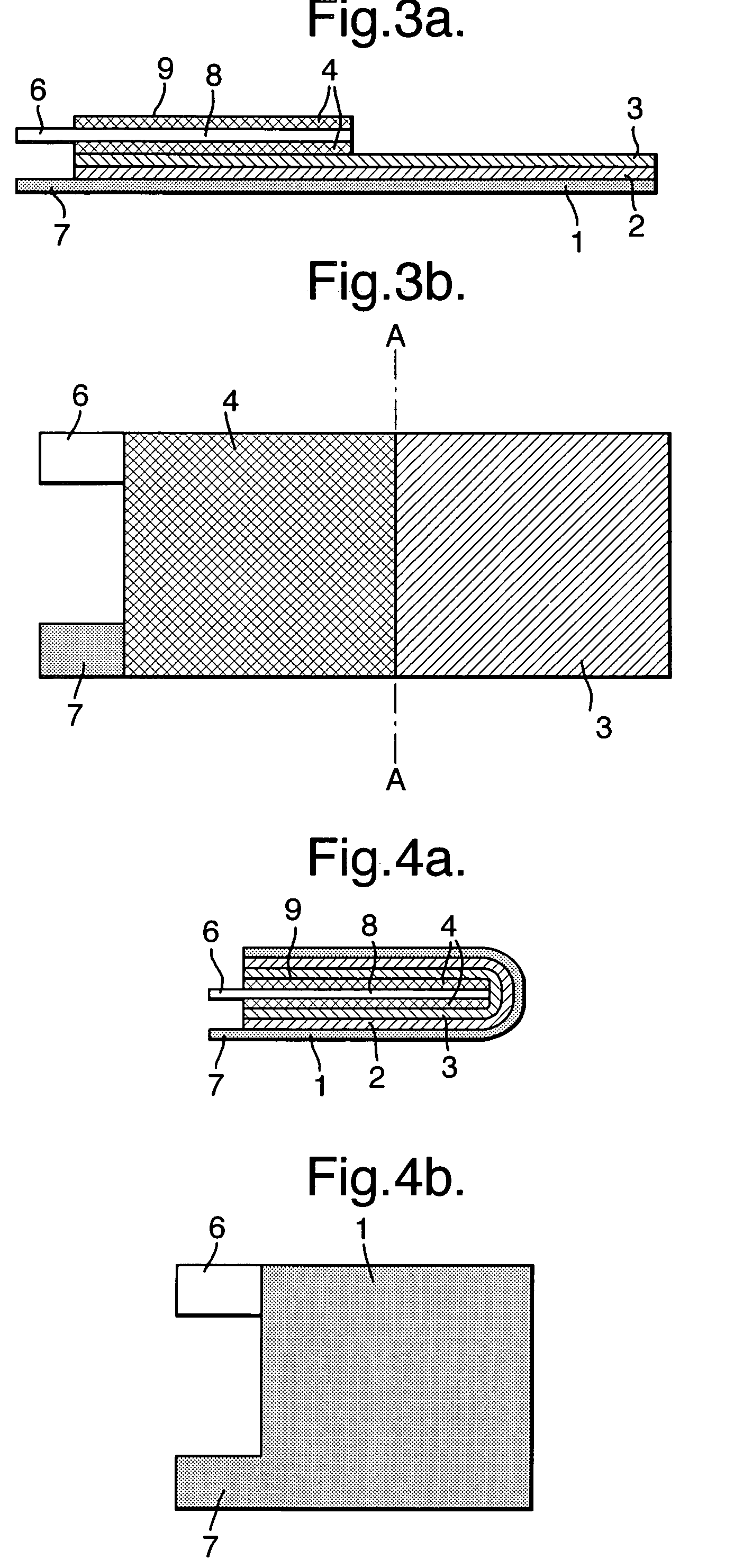Pouch cell construction
a technology of lithium primary batteries and puddles, which is applied in the maintenance/servicing of primary cells, non-aqueous electrolyte cells, batteries, etc., can solve the problem that puddle batteries do not offer optimal conditions
- Summary
- Abstract
- Description
- Claims
- Application Information
AI Technical Summary
Benefits of technology
Problems solved by technology
Method used
Image
Examples
example
[0047]The following Example illustrates the invention:
[0048]A 25 Ah primary lithium carbon monofluoride cell was manufactured in the following way:
[0049]A cathode sheet was prepared by, first, grinding and mixing intimately 42 g carbon monofluoride and 3.2 g of conductivity additive (carbon black). A binder solution was prepared by dissolving 4.8 g of polyvinylidene fluoride (PVDF) in N-methyl pyrollidinone. Then a paste was formed from the CFx mixture and the PVDF solution.
[0050]Aluminium foil (1050 Alloy, 25-30 micron) was cleaned and the cathode paste was coated onto the Al foil to a depth of 570 micron, so as to give a cathode capacity of 12.6 to 13.6 mAh / cm2. The sheet was then dried to give a final cathode composition by weight of 84:9.6:6.4 w / o CFx:PVDF:conductivity additive, and a final coating thickness of 185 micron.
[0051]The cathode sheet was cut to a length of 208 cm and a width of 9 cm, leaving an extra length for the terminal. The sheets were folded in half and vacuum ...
PUM
| Property | Measurement | Unit |
|---|---|---|
| lengths | aaaaa | aaaaa |
| lengths | aaaaa | aaaaa |
| depth | aaaaa | aaaaa |
Abstract
Description
Claims
Application Information
 Login to View More
Login to View More - R&D
- Intellectual Property
- Life Sciences
- Materials
- Tech Scout
- Unparalleled Data Quality
- Higher Quality Content
- 60% Fewer Hallucinations
Browse by: Latest US Patents, China's latest patents, Technical Efficacy Thesaurus, Application Domain, Technology Topic, Popular Technical Reports.
© 2025 PatSnap. All rights reserved.Legal|Privacy policy|Modern Slavery Act Transparency Statement|Sitemap|About US| Contact US: help@patsnap.com



